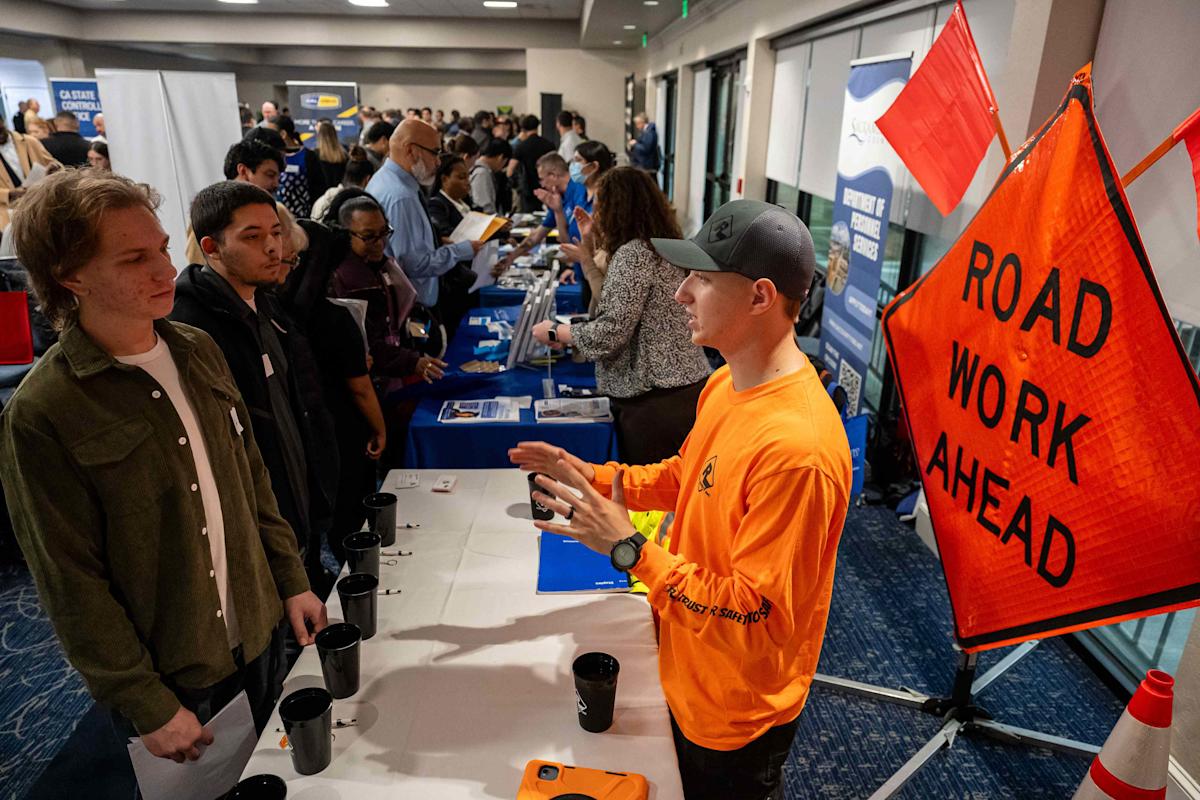More Americans Found Work After a Sluggish Summer, Delayed Labor Report Is Expected to Show
David Paul Morris / Bloomberg via Getty Images
Job seekers attend a career fair in November after the summer slowdown.
-
The Bureau of Labor Statistics will publish its report on Thursday on September job creation, after a six-week delay caused by the government shutdown.
-
U.S. employers are forecast to have added 51,000 jobs, more than the 22,000 in August, although less than the 147,000 average in the 12 months through April.
-
Uncertainty about tariffs has weighed on job creation, resulting in a significant hiring slowdown.
A long-delayed report on job growth Thursday is likely to show the job market bounced back in September after a dismal summer.
The Bureau of Labor Statistics is set to publish its monthly report on job creation and unemployment for September on Thursday, six weeks after its regularly scheduled release. The report was one of many official statistics delayed by the government shutdown that ended last week. It will indicate whether and to what extent the job market has recovered after a significant slowdown over the majority of the summer.
U.S. employers likely added 51,000 jobs in September, according to a consensus forecast cited by economists at Bank of America. That would be more than double the 22,000 added in August, but still relatively few by recent standards: The economy added an average of 147,000 jobs each month in the 12 months through April, for example.
A worse-than-expected job report could be a red flag that the labor market has gone from its low-hiring, low-firing limbo into something worse.
The unemployment rate is expected to hold steady at 4.3%, a relatively low rate by historic standards, according to the consensus forecast.
The report will demonstrate how well the job market is weathering several headwinds, including uncertainty created by President Donald Trump’s increased tariffs on most U.S. trading partners and the growing use of artificial intelligence.
It will also influence policymakers at the Federal Reserve, who will meet in December to set the nation’s benchmark interest rate. Members of the Fed’s policy committee are split on whether to cut rates to boost the economy and job market, or keep them higher for longer to push inflation down to the Fed’s target of a 2% annual rate.
A worse-than-expected jobs report could sway some Fed members toward a rate cut, while faster job growth would give ammunition to those arguing for a focus on inflation.
Thursday’s report may not be the last word on the health of the job market for the next Fed meeting, which takes place Dec. 9 and 10. In addition to data from private companies, the Fed could see reports for October and November before then.



Leave a Comment
Your email address will not be published. Required fields are marked *